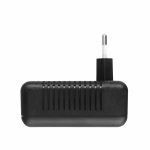The shift towards remote working has transformed our homes into makeshift offices. Maintaining an organized workspace has never been more important. While the flexibility and comfort of working from home can be liberating, it can also lead to a cluttered workspace. To keep your productivity high and stress levels low, you need a well-organized home office. In this comprehensive guide, we will reveal the best tips on how to organize your home office effectively.
The Art of Decluttering
Before you can organize your home office, the first step is to declutter. This involves eliminating unnecessary items and paperwork that are consuming valuable space. Think of it as starting with a blank canvas. Once you clear your space, you will get a better idea of how to organize your items.
Lire également : The best moving tips
Begin by sorting your items into three piles: keep, discard, and storage. Keep the essentials – these are the items you constantly use for your work. Discard anything obsolete or broken. If there are items you need occasionally, consider storage as an option. Remember, a clean workspace fosters a clear mind, and this will significantly improve your productivity.
In the digital era, many documents can be stored electronically. Going paperless not only saves space, but it is also environmentally friendly. Invest time in digitizing your records and important documents. You can use cloud storage services for easy access and added security.
A voir aussi : Urban permaculture for beginners
Making Use of Storage Solutions
Now that you’ve decluttered, the next step is to set up effective storage solutions. The best storage system is one that suits your work habits and the space available. Whether your home office is a dedicated room or a small desk in the corner, there is a storage solution for you.
Begin by making a list of the items you regularly use during your workday. This could include your computer, stationery, or reference materials. These items should be easily accessible to save time. Consider using desktop organisers or trays to keep these items within reach.
For less frequently used items, consider storage solutions like shelves, filing cabinets or boxes. Label your storage units for easy identification. If you are short on space, think vertically. Wall-mounted shelves or pegboards can be a great way to utilize wall space for storage.
Organizing Your Desk
Your desk is the heart of your workspace. How you organize your desk can significantly impact your work efficiency. The key is to keep only the essentials on your desk and use the rest of the space for your work.
Start by placing your computer or laptop in the center of the desk. This will be your primary work area. Keep your regularly used items, like your phone, stationery, and notes, within arm’s reach. Everything else should be stored away to avoid clutter.
A well-arranged desk also includes proper cable management. Use cable clips or ties to keep your cords neat and out of sight. This not only gives your desk a cleaner look, but it also prevents any tripping hazards.
Managing Your Time and Tasks
While physical organization is important, don’t overlook the importance of time and task management. Having a well-organized workspace is useless if you are not managing your tasks effectively.
Start by creating a to-do list. Prioritize your tasks according to their urgency and importance. Use tools like task management apps or a simple sticky note system to keep track of your tasks.
Time-blocking is another effective method. Allocate specific time slots for different tasks or activities. This can help to avoid multitasking and improve focus. Remember, effective time management is key to productivity.
Personalizing Your Space
Finally, personalizing your workspace can make it more pleasant and motivating. Add elements that reflect your personality and make you happy. This could be anything from family photos to your favorite artwork or inspirational quotes.
While personalizing, consider the ergonomics of your workspace. Invest in a comfortable chair and ensure that your desk is at the correct height. Proper lighting is also crucial to reduce eye strain.
Organizing your home office is not a one-time task but an ongoing process. Regularly reviewing and decluttering your space will help to maintain organization. Remember, an organized workspace leads to an organized mind, enhancing your efficiency and productivity. Now, it’s time to roll up your sleeves and transform your home office into a haven of productivity.
Using Office Supplies Wisely
As you organize your home office, remember the role office supplies play in maintaining an orderly and functional workspace. If used wisely, office supplies can facilitate your work and office organization. Start by evaluating the office supplies you currently have and their usage.
For example, if pens are scattered all around your desk, a simple pen holder could solve the problem. If you’re often searching for a particular document, a filing cabinet might be the answer. Moreover, a whiteboard or corkboard can be used to keep track of important reminders, deadlines, or random thoughts.
If you frequently use physical files or documents, consider using color-coded folders. This way, you can visually distinguish different subject matter or project files. Label makers can also be an invaluable tool in your office organization efforts.
When choosing office supplies, think about their functionality and how they will help you stay organized. Office supplies are not just about aesthetics, they should serve a purpose and enhance the organization of your workspace.
Don’t forget to declutter your office supplies regularly. Discard any items that are no longer functional or necessary. This will help keep your office neat and prevent accumulation of unnecessary items.
Maintaining Your Home Office Organization
Maintaining a functional and organized office requires continuous effort. This doesn’t mean you should do a major overhaul every week, but it does require regular attention. Set a schedule for regular office clean-ups, perhaps at the end of each week or on a monthly basis.
Regular maintenance of your workspace will help you keep track of your items, manage your office supplies, and ensure that your filing system is up to date. It will also prevent clutter from accumulating, making your office a more pleasant and productive space.
The key to effective office organization is flexibility. Be ready to make changes as your work habits and needs evolve. What works for you today may not work for you in the future. Always be mindful of your work habits and needs, and adjust your home office organization accordingly.
Moreover, remember to keep your digital workspace organized too. Regularly declutter your computer desktop, organize your digital files, and clean up your email inbox. This will help you work more efficiently and reduce digital clutter.
Conclusion
Organizing your home office is not just about creating a visually pleasing workspace. It’s about making your workspace functional and conducive to productivity. From decluttering to arranging your desk, using storage solutions, managing your time and tasks, personalizing your space, using office supplies wisely, and maintaining your office organization, these steps will help transform your home office into a productive and stress-free environment.
Remember, an organized workspace leads to an organized mind, enhancing your efficiency and productivity. Now that you’ve learned these helpful organization ideas, it’s time to take action and transform your home office. As you continue reading this guide, we hope you’ll see how these tips can be applied to your own workspace to improve your working home experience. The journey to a well-organized office space starts with you, and the time to start is now.













